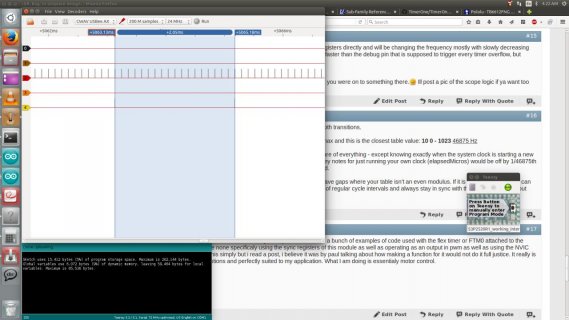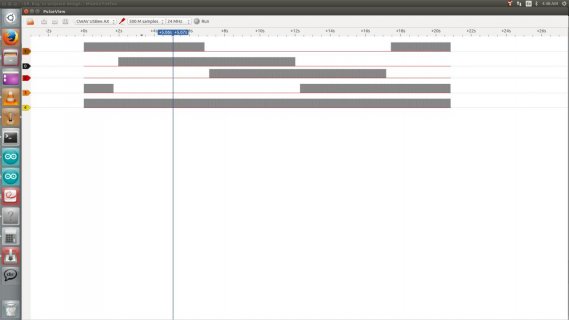Please understand that posting on a public forum is my last resort when searching for information, but i have been searching for a solution for a month now. Perhaps 500hz is the most an interrupt can be called but this seems low to me. My design is solid state, meaning that a magnet is not physically rotated by a motor, rather the magnetic field is changed digitally through 4 electromagnets in a sine and cosine pattern. my problem is that i cant seem to update ftm0 more often than once every 2.05 to 2.08 milliseconds(I have a cheap logic analyser), while my isr only takes 3 microseconds to complete.
I suspect this has to do with the default frequency of 490 for pwm, but what is the fastest the flex timers on teensy can be updated without resorting to dma? mod value seems to have no effect on the frequency of the isr, it always seems to trigger every 2.05 millis.
Sass.
I suspect this has to do with the default frequency of 490 for pwm, but what is the fastest the flex timers on teensy can be updated without resorting to dma? mod value seems to have no effect on the frequency of the isr, it always seems to trigger every 2.05 millis.
Sass.



